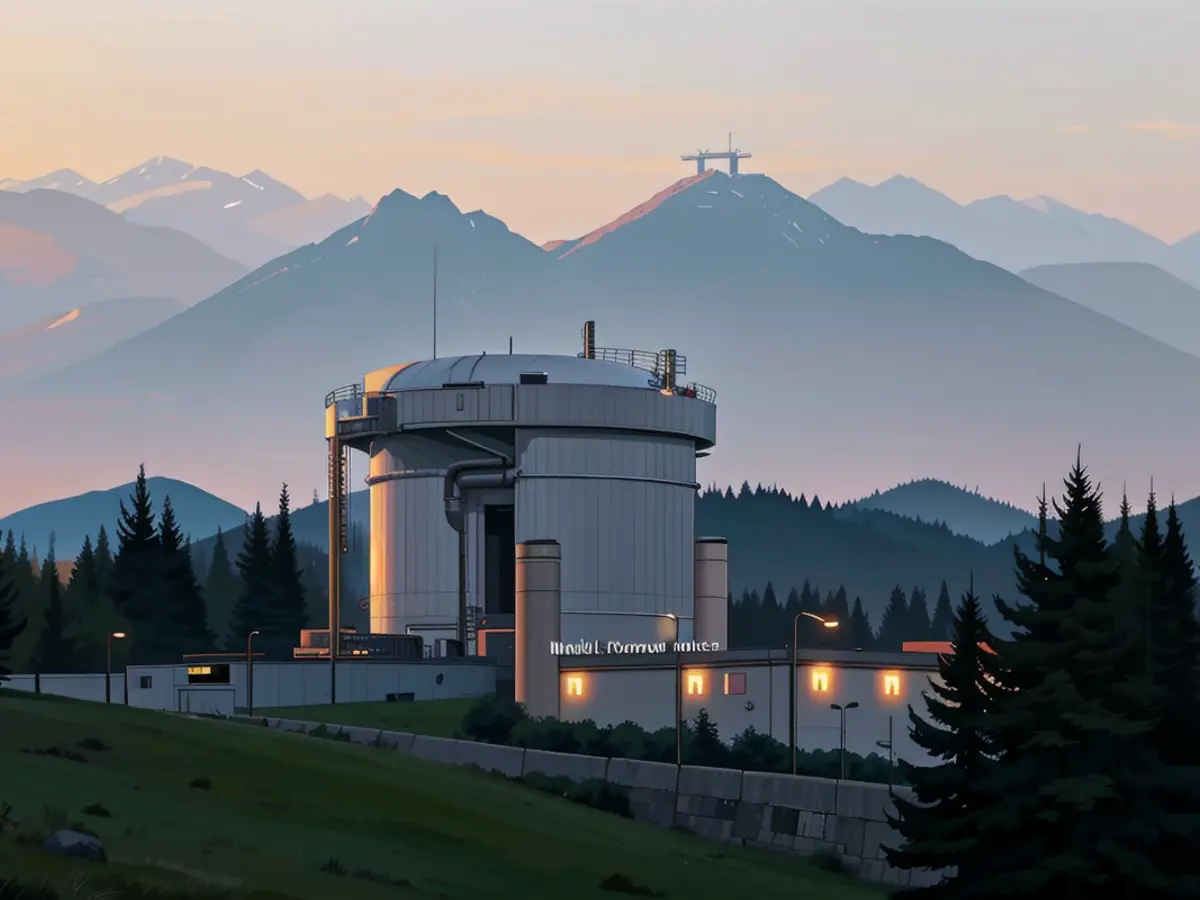Smooth Sailing at Beznau, but Modernization Planned for Leibstadt and Gösgen
Swift reaction: Swiss nuclear plant undergoing emergency shutdown
Last Sunday night, a hiccup at the Swiss nuclear power plant Beznau, snuggled near the German border, caused an automatic shutdown. No danger was reported, as explained by the plant's operator, Axpo, who attributed this blip to a grid connection failure [1].
Settled in Döttingen, canton of Aargau, this powerhouse is a stone's throw away from the German border, about seven kilometers south of Waldshut-Tiengen in Baden-Württemberg [2]. During the shutdown, only the Block 2 reactor took a rest, with Block 1 continuing to hum along brilliantly. The root cause of the grid connection trouble is currently under investigation [1].
Beznau 1 and Beznau 2 went live in 1969 and 1971 respectively, making them amongst the globe's oldest operational nuclear power plants [3]. Even though Switzerland has decided on a nuclear phase-out, these veterans can chug along as long as they keep their safety standards in check. Axpo intends to dismantle Beznau 1 and 2 in 2032 and 2033, respectively [3].
Switzerland maintains two other bustling nuclear power plants—Leibstadt and Gösgen—in addition to Beznau. Sadly, Mühleberg had to call it quits in 2019 [2].
While Beznau caught a temporary break, the other active Swiss nuclear power plants, Leibstadt, and Gösgen, are pulling out all the stops with significant modernization initiatives [4]. Both are key contributors to Switzerland's power generation, accounting for about a third of the country's electricity requirements [5].
Leibstadt
Nicknamed Switzerland's largest nuclear reactor unit, Leibstadt is a 1,220-MW boiling water reactor, humming merrily in commercial operation since 1984 [4]. In a recent development, Framatome landed a gig to modernize its instrumentation and control (I&C) systems, involving replacing key safety I&C systems for engineered safety functions. This project is geared towards enhancing plant smoothness, availability, and ease of maintenance [4]. This modernization is part of a broader strategy aimed to keep the plant running safely and reliably until at least 2045 [4]. Since its inception, around €1.5 billion has been invested in the plant's modernization and maintenance, with an additional €1 billion earmarked for future upgrades [4].
Gösgen
Gösgen, a pressurized water reactor, boasts a net electrical capacity of 1,010 MW and commenced operations in 1979 [5]. Framatome has been tasked with modernizing the plant's protection system, with enhancements utilizing TELEPERM XS technology and improved back-up batteries [5]. This update empowers better monitoring capabilities for speedy intervention, all while upholding stringent safety guidelines [5].
Both plants, sustained through successive modernizations, are an integral part of Switzerland's power generation, maintaining their positions at the forefront of safety and performance [5]. Framatome's recent contract illustrates the relentless endeavor to preserve and improve the operational efficiency of the Gösgen plant [5].
[1] ntv.de, dpa
[2] dpa
[3] ntv.de, dpa
[4] Swiss Federal Nuclear Safety Inspectorate (ENSI)
[5] "Framatome Wins Modernization Contract for Gösgen Unit 2" - World Nuclear News, January 19, 2021
- Axpo, as part of its community policy, is considering vocational training for local residents in preparation for the shutdown and modernization of the Leibstadt and Gösgen nuclear power plants.
- The vocational training programs in the canton of A detected a need for skilled technicians to support the upgrades planned for the vocational training Leibstadt and Gösgen nuclear power plants.
- In light of the modernization projects at the Leibstadt and Gösgen nuclear power plants, the Swiss Federal Nuclear Safety Inspectorate (ENSI) has emphasized the importance of continuous vocational training to ensure the plants maintain their high safety standards.








